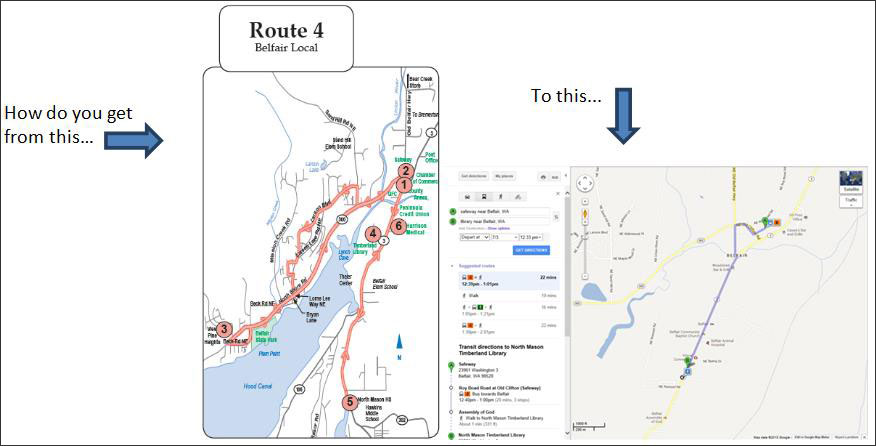GTFS (General Transit Feed Specification) Builder
 Trip planning technology (the integration of transit route and schedule data on a map) enables riders to determine how to use transit to get where they need to go. How can your agency bring trip planning technology onto your website? It seems complicated, but the information you already collect may move you one step closer to having that technology. GTFS Builder helps you complete the final steps.
Trip planning technology (the integration of transit route and schedule data on a map) enables riders to determine how to use transit to get where they need to go. How can your agency bring trip planning technology onto your website? It seems complicated, but the information you already collect may move you one step closer to having that technology. GTFS Builder helps you complete the final steps.
National RTAP partnered with the Marcy Jaffe Company to bring you GTFS Builder - a free web-based tool to help you create GTFS files to post on trip planning sites such as Google Transit. Check out the Getting Your Transit Online with GTFS Technical Brief and go to the Support Center to learn more about getting started!
Product Features
- No-cost GTFS data creation or maintenance tool, consisting of two Excel spreadsheets that work together to generate valid, full function GTFS files
- Extensive library of short how-to videos that walk you through each step of the process
- Instructions on how to use existing data your agency may have that will save you time in building your GTFS files
- Instructions on validating data and getting the files ready to be uploaded
- The option to use your agency's National RTAP Cloud account to securely store and publish your GTFS .zip files, for Google Transit or the National Transit Map to fetch the files automatically
- Timetable output from GTFS Builder is available so you can publish your route timetables on your website in a way that meets accessibility standards
- Trip planning that can be published in multiple languages to help meet Title VI mandates
- Technical assistance via email or phone for successful GTFS data creation and maintenance
GTFS Builder was created to help bring innovative technology to small urban, rural and tribal transit providers. While National RTAP promotes using GTFS Builder, there are many other GTFS Tools and consultants that can prepare GTFS files and assist you.
GTFS Builder 3-Step Process Overview

The first step of GTFS Builder is to determine the location of your bus stops, by finding the latitude and longitude of each stop along a bus route, and entering them into the GTFS Builder Excel spreadsheet. The next step is to input all of your schedule data into the spreadsheet. The final step is to validate your data to make sure it works within the trip planner. Once your data has been validated, you set up the file to be launched on Google Transit.